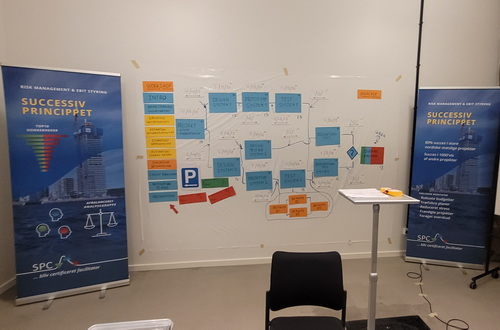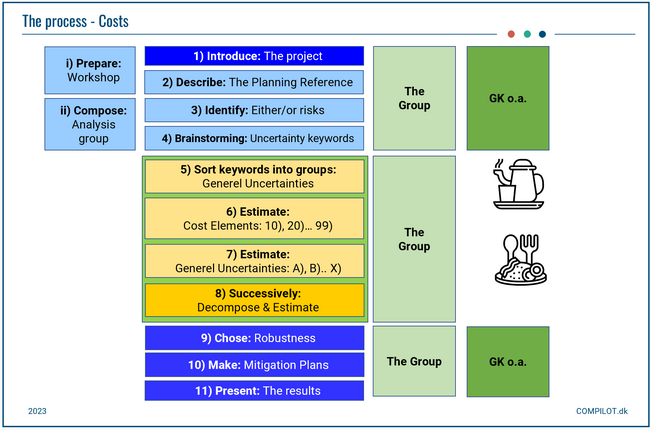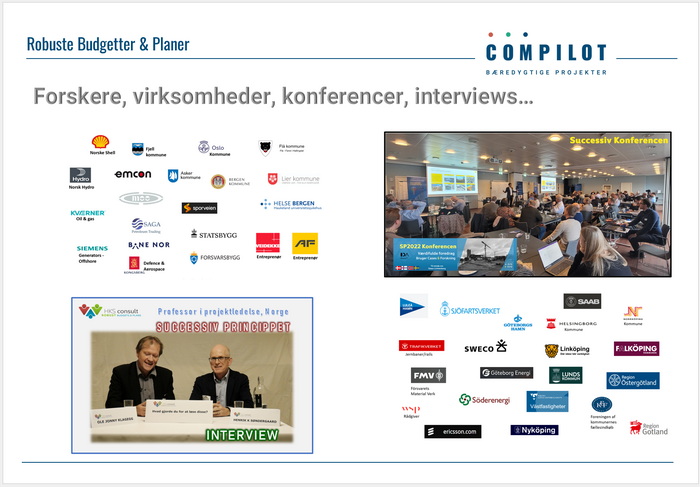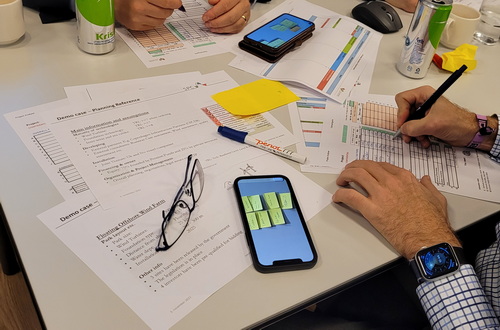EARLY QUALITY ASSURANCE
THE SUCCESSIVE PRINCIPLE
EFFECTIVE THEORY & PRACTICE
Use one of the world’s best methods
Create robustness & success
EARLY QUALITY ASSURANCE
BUDGET AND SCHEDULES FAIL.
Many have experienced budgets and schedules failing. Furthermore, that the desired benefit is not achieved as agreed.
BUDGETS and PLANS CAN BE PREDICTED
Many methods and processes attempt to predict budgets and duration – but without success – until the Successive Principle emerged in the project world.
It’s a project management methodology that has been successful in thousands of projects in Europe since the late 1990s. Projects experience significantly more accurate budgets and plans, and that it is possible to do so early on in the project.
For example, when a client wants to test the economics of a project idea before deciding to spend time and money on developing and designing the project.
EFFECTIVE ESTIMATIONS
HOW TO MAKE AN EFFECTIVE ESTIMATE IN A BUSY WORK LIFE?
In a busy world, you need to choose effective methods and tools to keep up with the competition.
We suggest using the Successive Principle by Steen Litchenberg
REFERENCES
The method is successfully used in government and municipal projects in Norway and Sweden.
Research in Norway shows (2023) that 74% of large complex projects such as tunnel and highway projects and large IT infrastructure projects stay on budget!
CONTRACTORS
Norway’s two largest contractors Veidekke and AF Gruppen use the method.
AF-Gruppen.no has increased their operating margin (EBIT) from 2.8 to 6% based on using the method!
This should pique the curiosity of many executives in the construction industry, where the risk level of losing profits is high.
GOVERNMENT PROJECTS
In Sweden, the method has been adopted by law for large infrastructure projects since September 2009.
This applies, for example, to the upcoming railway program with a total budget of over SEK 205 billion. All rail projects must use the Successive Principle to assess cost and duration.
METHODS
BRIEFLY ABOUT THE METHOD
The method also includes the uncertainties of the surroundings. Many have found that the biggest uncertainties often come from outside the project and not within the project deliverables.
Experience shows that in the beginning, 80-90% of uncertainties often lie OUTSIDE the project and only 20-10% in the project deliverables!
BRIEFLY ABOUT THE METHOD
The method works top down and focuses only on the elements in the project that have the highest uncertainty contributions. This saves a lot of analysis work and avoids being ‘Paralyzed by analyze!
USER REFERENCE: VEIDEKKE
Veidekke ASA – Norway’s largest contractor
Veidekke has been using the Successive Principle since 2017, when we discovered that the method could support us in assessing projects.
We use the method in our daily work, for example, to make uncertainty assessments of offers. This means we can quickly gain insight into a project’s uncertainties and whether it is a healthy project to enter into.
As a result, we get a list of the most significant uncertainties and create an action plan to minimize risks and optimize opportunities, which are the most valuable.
Furthermore, we can more easily get an overview of the overall level of uncertainty at the company level.
We do around 500 analytsis throughout the year, and it’s built into our tendering procedures.
We have a slogan “Don’t focus on the numbers – but on the actions!”
It’s the actions that matter most to ensure good projects.
Director Uncertainty Management / SVP Risk Management, Tommy Kvam Stokke


EDUCATION
FACILITATOR TRAINING
We train employees to become facilitators specializing in conducting Successive Workshops with different types of analysis.
Training includes e.g:
- Introduction to the underlying theory
- Training on the pitfalls to avoid
- Training via own projects or cases
Requirements for the participant are e.g:
- The person is used to facilitating workgroups
- That the person is curious about their own way of acting in a group process
- That the person works with positive feedback
- That the person is open-minded and curious about how a process is carried out
The training can be conducted in Danish, English or ‘Scandinavian’.
Benefits:
- Ensure your business has clear budgets and plans – that stick
- The company increases its project efficiency and competitiveness
- That the company at least stabilizes or better increases its EBIT
- The company can more easily recruit qualified employees
- The company experiences less stress in projects and among employees






